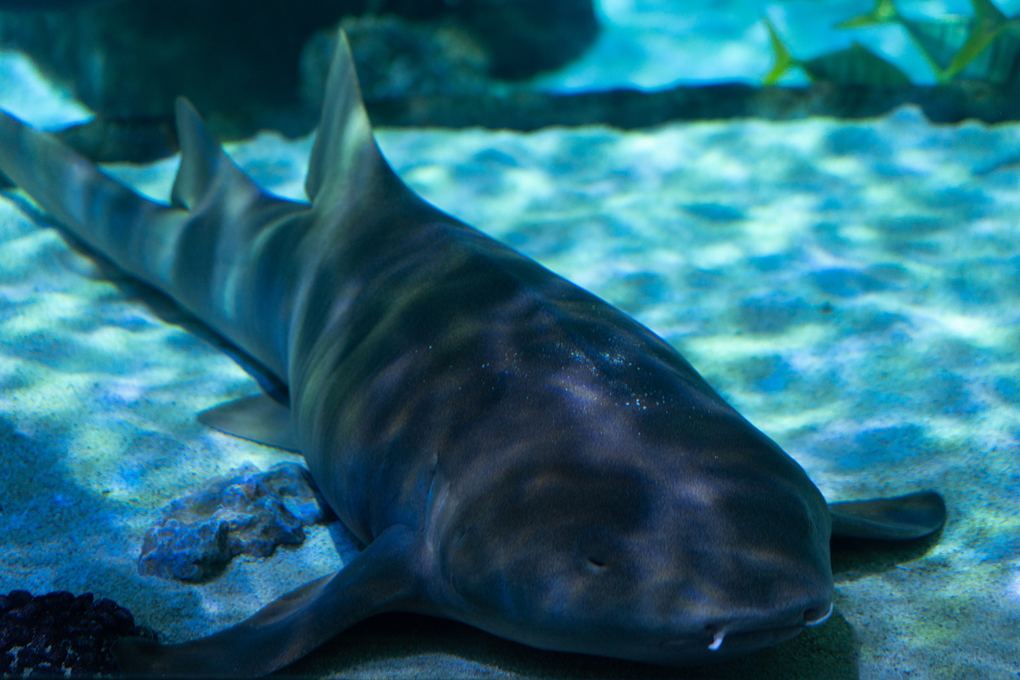Ginglymostoma cirratum
Fast Facts
- Nurse sharks can be found lying together in piles of up to 40 sharks.
- These sharks are usually non-aggressive and are usually considered lazy or sluggish.
- Baby sharks are called pups, and nurse sharks give birth to about 21-28 of them.
- They have two ways of breathing, one while swimming and one while resting.


Range
Western Atlantic: Rhode Island to Brazil; Eastern Pacific: Baja, California to Peru

Habitat
Coastal habitats

Size
Up to 14 feet

Nutrition
Small fishes, crustaceans, octopus, squid, sea urchins, and sometimes corals
Characteristics
The females get larger than the males. The skin is yellowish-brown to gray-brown in color, with possible small spots or a light saddle marking. They have two barbels by their nostrils that could possibly aid in finding food in the sand. Like many sharks, Nurse sharks have small spiracles behind the eyes which are used to pump water to their gills, so they do not have to swim continuously. Their caudal fin is about one-fourth of their total body length.
Behavior
Nurse sharks are in-shore bottom dwellers, usually found swimming along the seafloor. They can also ‘walk’ using their pectoral fins as limbs. During the day, Nurse sharks can be found in groups of up to 40 individuals, laying together or stacked on top of each other. They are nocturnal feeders and feed on invertebrates and fish. The teeth of a Nurse shark are small and designed for crushing prey with hard shells. Their mouths are small, but their pharynx is like a bellows, which allows them to use suction to suck in prey.
Reproduction
Nurse sharks are ovoviviparous, meaning that the eggs are held inside the female, attached to a yolk sac. In a sense, they give ‘live birth,’ and the litter can have over 20 pups. The mating ritual may include two to three adults. Males become sexually mature between 10-15 years, and females reach maturity around 15-20 years. Mating occurs in June or July, and gestation takes about six months.

